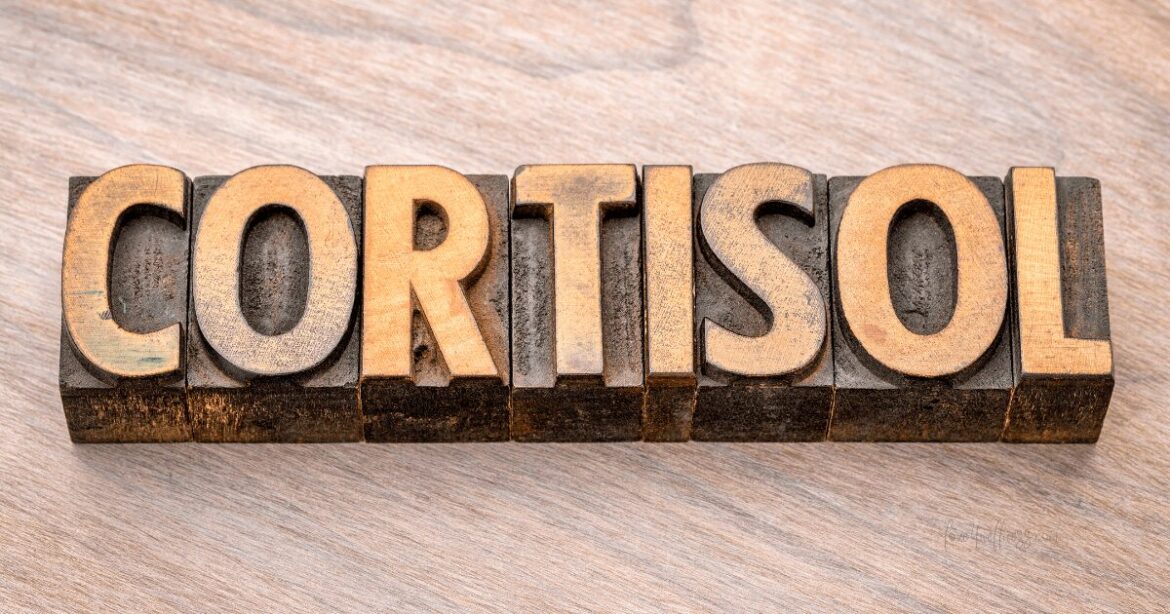Cortisol — your body’s main stress hormone — is meant to protect you in emergencies. But when life feels like a constant “fight-or-flight” situation, Cortisol stops helping and starts hoarding. It’s important to understand how cortisol and stress affect visceral fat in men, turning your survival mechanism into a fat-storing command, especially around your belly.
In our previous article (The Hormonal Landscape: Testosterone, Cortisol, and Visceral Fat in Men Over 40), we learned how Cortisol pairs with Testosterone decline to create the perfect storm for belly fat. While Testosterone’s decline is gradual, Cortisol—the primary stress hormone—is the immediate and powerful signal that tells your body to store fat, specifically around your abdomen.
Cortisol is designed for acute survival (the “fight-or-flight” response). The problem is that the chronic pressures of modern life—long work hours, poor sleep, and financial anxiety—keep this hormone running on high, turning your survival mechanism into storage mode.
This article will break down exactly why Cortisol chooses your belly for fat storage and identify the three daily habits that cause stress, keeping your Cortisol levels chronically elevated and leading to visceral fat in men.
#1 The Visceral Preference: Why Cortisol Targets Your Belly
Why doesn’t chronic stress make you store fat in your arms or legs? The answer lies in the unique structure of visceral fat cells.
Visceral fat cells have a significantly higher concentration of Cortisol receptors than subcutaneous (pinchable) fat cells. Think of these receptors as parking spots; Cortisol prefers to park its fat-storage signals right next to your vital organs.
- The Mechanism: When stress triggers the release of Cortisol, the hormone binds to these receptors, signaling the body to create more fat cells in the abdomen. It’s an evolutionary quirk: your body is constantly stressed, so it assumes you need an emergency energy reserve right next to your liver and other organs.
When Cortisol is high, your body is effectively telling itself: “There is a crisis. Prioritize storing energy right now, right here (the belly).”
This makes visceral fat extremely hard to lose until the stress signal is turned down.
#2 The Three Lifestyle Habits That Accelerate Cortisol
Cortisol doesn’t just spike when you’re in a high-pressure meeting. It’s driven by three silent, daily habits common among busy men over 40. These habits might look harmless, but they quietly keep your Cortisol switch stuck in the ‘on’ position.
1. Sleep Deprivation: The Night Shift That Spikes Cortisol
Sleep is when your body resets. When you routinely get less than 7–8 hours of quality sleep, your body perceives it as a severe stressor.
The Result: Lack of sleep elevates Cortisol the following day. This not only promotes fat storage but also increases the hunger hormone (ghrelin) and suppresses the satiety hormone (leptin), leading to increased cravings for simple, sugary carbs—the very foods that fuel visceral fat growth.
2. Poor Meal Timing: Why Skipping Breakfast Backfires
While intermittent fasting can be effective, inconsistent or very long fasting periods can be stressful for a body already dealing with metabolic pressure. Skipping breakfast, for example, forces your body to run on reserves. And, this often involves a Cortisol spike to keep blood sugar stable.
Safely incorporating IF: If you choose to practice IF, keep your fasting window moderate (12-14 hours) and avoid forcing it during high-stress periods or after poor sleep, as this only adds to your Cortisol burden. Your body releases Cortisol to mobilize energy, leading to an unnecessary stress signal that encourages storage. Eating frequent, stable meals rich in protein and fiber is key to keeping Cortisol steady throughout the day.
3. Overtraining: The Hidden Stress of Too Much Exercise
Exercise is crucial for reducing visceral fat. But over-training, especially with too much high-intensity cardio and too little rest, can backfire.
The Result: When you push your body to exhaustion without adequate recovery, you induce a massive physical stress response, raising Cortisol and potentially offsetting the fat-burning benefits. The key is balance: pairing intense workouts with strategic rest and low-intensity movement.
#3 The Cortisol-Insulin Connection
Cortisol doesn’t work in isolation; it partners with Insulin to maximize fat storage.
When Cortisol spikes, it tells the liver to dump glucose into the bloodstream (to prepare the body for action). This rush of sugar requires a massive counter-response from your pancreas: a surge of Insulin.
The Accelerator Effect: Insulin is the primary signal for fat storage. When you have high Cortisol and high Insulin simultaneously (e.g., after a stressful day and a sugary late-night snack), you get the perfect storm: the Cortisol prepares the cells for storage, and the Insulin delivers the load directly to the visceral fat receptors.
Final Takeaway: Breaking the Cycle
The fight against visceral fat caused by stress is often won outside the gym and the kitchen — by giving your body what it truly needs: deep sleep, recovery, and calm. Managing Cortisol means making small, consistent choices that signal safety and balance to your system.
In our next post, we will provide the final summary of all causes we’ve discussed, putting the pieces together to create The Top 7 Mechanisms that drive visceral fat in men over 40.
